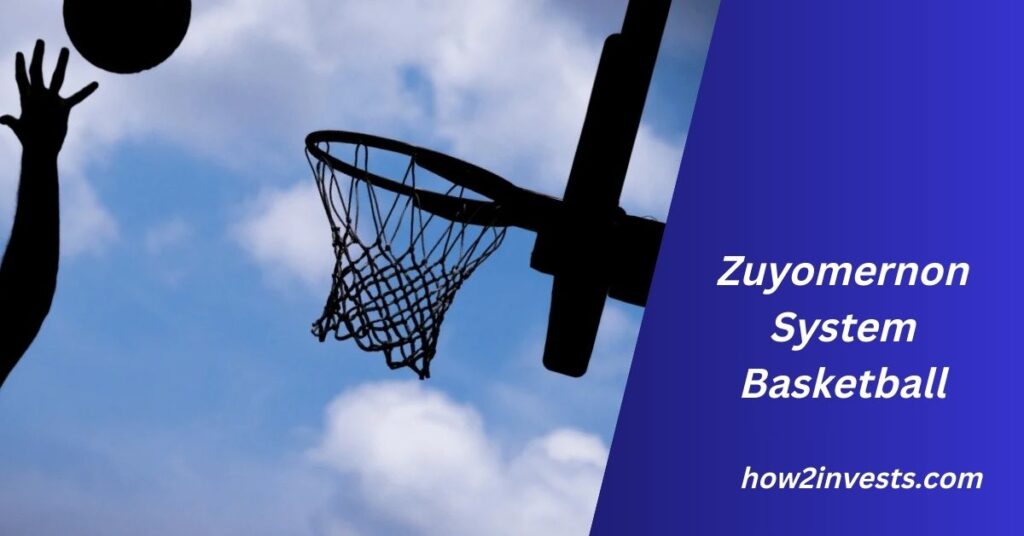Zuyomernon System Basketball: Revolutionizing Modern Basketball Training and Strategy

Basketball is a sport that constantly evolves, with strategies and training methods continually improving to meet the demands of faster, more dynamic gameplay. Among the many strategies that have emerged in recent years, the Zuyomernon System Basketball stands out as a modernized approach that incorporates fluid positioning, versatile player roles, and sustainable team dynamics. This system is designed not only to enhance individual skills but also to improve overall team performance, creating a more adaptive and resilient style of play. In this article, we will explore the key components of the Zuyomernon System Basketball, its core principles, its application in both training and game situations, and the impact it has on teams and players.
Understanding the Zuyomernon System Basketball
The Zuyomernon System Basketball is a comprehensive framework that incorporates a blend of innovative strategies, player flexibility, and in-game adaptability. The system emphasizes fluidity in positioning and requires players to be well-rounded, capable of fulfilling multiple roles on the court. This approach challenges the traditional notion of fixed positions in basketball and encourages players to adopt a more dynamic and versatile style of play.
At its core, the Zuyomernon System focuses on maximizing the strengths of individual players while ensuring that they can adjust to different roles and responsibilities as the game progresses. This system advocates for constant movement, rapid transitions, and a deep understanding of both offensive and defensive tactics.

Key Principles of the Zuyomernon System Basketball
1. Fluid Positioning
In traditional basketball, players are often assigned specific positions based on their skills. For example, point guards handle the ball, shooting guards focus on scoring, and centers dominate the paint. However, the Zuyomernon System challenges this static approach by encouraging fluid positioning. This means players are not confined to a specific area of the court or a particular role. Instead, they are expected to move freely and interchange roles depending on the situation.
Also Read: Get_Ready_Bell:Client_Pulse – Empowering Businesses with Data-Driven Insights
Fluid positioning allows teams to be more unpredictable, making it difficult for the opposing team to anticipate where the next play will come from. Players in the Zuyomernon System are trained to be comfortable in any position on the court, enabling them to adapt quickly to changing dynamics and create mismatches that exploit the opposition’s weaknesses.
2. Versatile Player Roles
In a traditional system, players are typically pigeonholed into specific roles based on their strengths. However, the Zuyomernon System promotes the idea of versatile roles, where players are trained to be effective in multiple areas of the game. For instance, a player who may traditionally be a shooting guard in one system may also be expected to play point guard or even center at different times during the game.
This versatility allows for more flexibility in both offensive and defensive strategies. A player who can shoot from outside, attack the rim, and play excellent defense can be invaluable to the team, regardless of their position. By embracing versatility, the Zuyomernon System maximizes player potential and increases team efficiency.
3. Sustainable Team Dynamics
One of the most important elements of the Zuyomernon System is its emphasis on sustainable team dynamics. This refers to creating a team culture where all players are involved in every phase of the game, both offensively and defensively. Teams utilizing this system are not reliant on one or two standout players; instead, every player is expected to contribute to the team’s success.
Sustainable team dynamics foster strong communication, trust, and teamwork. The system encourages constant collaboration and ensures that all players are on the same page when it comes to strategy and execution. This creates a more cohesive unit that can perform well even when facing challenges, such as injuries or difficult matchups.
Training Methods in the Zuyomernon System
The Zuyomernon System is not just about in-game strategies; it also involves a unique approach to player development and training. By focusing on fluidity and versatility, the training methods used in this system are designed to build well-rounded athletes who can excel in multiple areas of the game.
1. Dynamic Drills and Workouts
Training sessions for players following the Zuyomernon System involve dynamic drills that focus on agility, decision-making, and adaptability. These drills are designed to simulate the unpredictable nature of the game and encourage players to think on their feet. For example, players may be asked to move between different positions during a drill, simulating the fluid positioning required during an actual game.
Additionally, drills are designed to build a player’s ability to switch between offensive and defensive roles. This ensures that players are comfortable moving seamlessly between different roles on the court without losing momentum.
2. Versatility Training
To develop players who can take on multiple roles, the Zuyomernon System incorporates versatility training into its regimen. This involves teaching players skills that go beyond their natural position. A center, for example, might work on perimeter shooting or ball handling, while a point guard may train to be more aggressive in the post or improve their rebounding abilities.
Also Read: Jonathonspire: A Comprehensive and Informative Article
Versatility training also includes learning how to read the game and make decisions quickly. Players are encouraged to develop a deep understanding of different playing styles, allowing them to adjust their approach based on the team’s needs or the situation on the court.
3. Team Collaboration and Communication
Training in the Zuyomernon System places a strong emphasis on communication and collaboration. Since the system relies on fluid positioning and versatile player roles, constant communication is crucial. Players must be able to quickly adapt to changes in strategy, and this requires clear communication on both offense and defense.
Team-building exercises are an integral part of the training process, as they help foster trust and understanding between players. Effective collaboration ensures that everyone is aware of their responsibilities, making it easier to execute complex strategies during games.
Implementing the Zuyomernon System in Games
While the training process is vital, the true test of the Zuyomernon System lies in its implementation during actual games. Here’s how the system is applied in various in-game situations:
1. Offensive Strategy
On offense, the Zuyomernon System emphasizes constant movement and adaptability. Players are not restricted to specific spots on the court but instead move freely based on the ball’s location and the defense’s positioning. This unpredictability makes it difficult for opposing teams to set up a solid defensive structure.
The system also relies on quick ball movement and creating mismatches. A player who is traditionally a defender may find themselves in an offensive position, creating confusion for the defense. This fluidity allows teams to exploit defensive weaknesses and create high-quality scoring opportunities.
2. Defensive Strategy
Defensively, the Zuyomernon System focuses on flexibility and adaptability. Rather than sticking rigidly to man-to-man or zone defenses, players are trained to read the game and make adjustments on the fly. This could involve switching between defensive schemes based on how the opposing team is attacking or rotating quickly to cover open players.
The system also emphasizes team defense, where all players are involved in stopping the ball and helping each other. By working together and communicating effectively, teams can disrupt the opposition’s offense and force turnovers.
3. In-Game Adjustments
One of the standout features of the Zuyomernon System is its emphasis on in-game adjustments. Coaches and players are encouraged to adapt to the game’s changing circumstances, whether that involves switching roles, adjusting defensive schemes, or altering offensive strategies. The ability to make quick adjustments is a key factor in the system’s success, as it allows teams to stay competitive even when faced with unexpected challenges.
Also Read: Debby Clarke Belichick: A Comprehensive Look
FAQs About the Zuyomernon System Basketball
What makes the Zuyomernon System different from traditional basketball systems?
The Zuyomernon System focuses on fluid positioning and versatile player roles, which contrasts with traditional systems that assign fixed positions. This allows for more adaptability and unpredictability in both offensive and defensive strategies.
How does the Zuyomernon System improve team dynamics?
By promoting a culture of collaboration and communication, the Zuyomernon System ensures that all players are involved in every phase of the game. This leads to stronger team chemistry and a more sustainable approach to success.
Is the Zuyomernon System suitable for all levels of basketball?
Yes, the Zuyomernon System can be implemented at all levels, from youth leagues to professional teams. Its emphasis on versatility and fluidity allows players to develop essential skills that can be applied in any context.
How can I implement the Zuyomernon System in my team?
To implement the Zuyomernon System, focus on training players to be versatile, encourage fluid positioning, and emphasize communication and team collaboration. It’s important to create a flexible system that allows for in-game adjustments and player adaptability.
Conclusion
The Zuyomernon System Basketball represents a significant evolution in basketball strategy and player development. By focusing on fluid positioning, versatile roles, and sustainable team dynamics, this system challenges traditional approaches and offers a fresh perspective on how the game should be played. Through its emphasis on adaptability, communication, and in-game adjustments, the Zuyomernon System has the potential to transform teams into more cohesive, unpredictable, and successful units. As basketball continues to evolve, the Zuyomernon System provides a blueprint for the future of the sport, ensuring that teams are ready for the challenges of tomorrow’s game.




